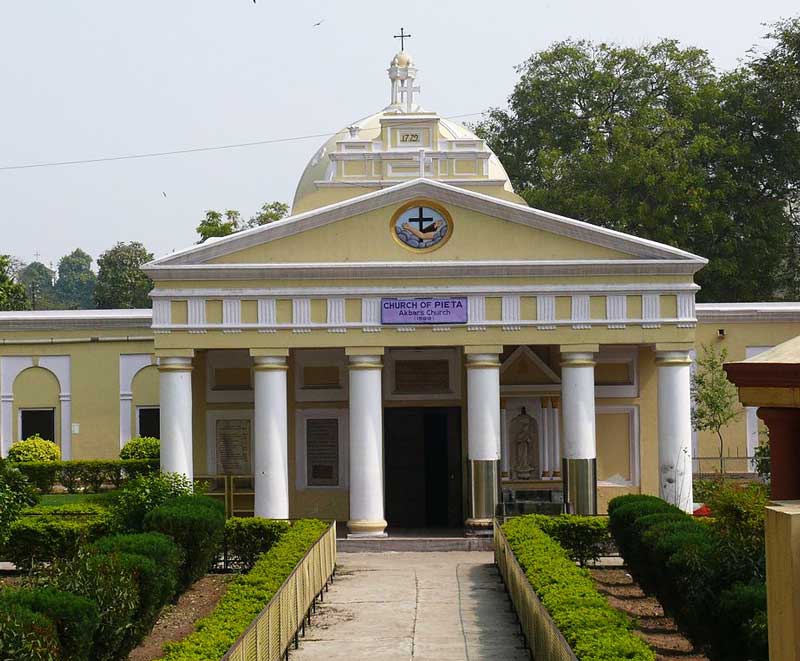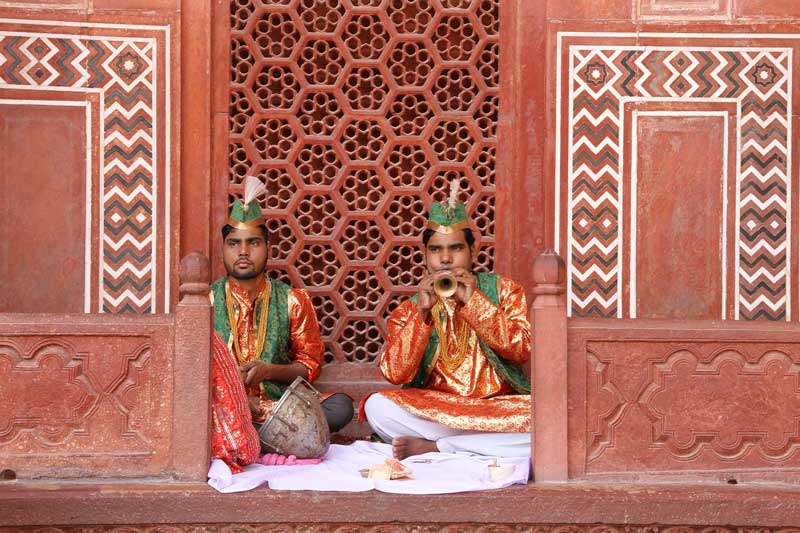Beyond the Taj: Agra’s Treasures Off the Beaten Track

When in Agra, visiting the Taj Mahal is a must. The marble wonder is the most visited destination in India for very good reason, but if that's where your exploration of the area's history and architecture begins and ends, you're missing out. Our partner and local specialist in India, Creative Travel, rounded up the best sites beyond the Taj.
Mariam’s Tomb
When the wife of Akbar the Great, the third Mughal emperor who reigned from 1556 to 1605, died their son, Jahangir built a beautiful mausoleum for her, known at Mariam’s Tomb, which is close to Akbar's mausoleum, Sikandra. It is a striking sight to see! Surrounded by manicured gardens, the red sandstone structure has decorative designs that feature floral patterns and beautifully carved columns.
The name ‘Mariam’ inspires intrigue amongst visitors. She was born a Rajput princess, Heer Kunwari but after she married Akbar in 1562 and gave birth to their son, Jahangir, she was re-christened as Mariam-uz-Zamani.
Mariam's Tomb
Kos Minar
The Mathura-Agra highway and other parts where the Mughals dominated are dotted with minarets along the road that were erected in the 16th century to serve as markers of distance along royal routes. The unit of measurement was used at the time was a ‘kos’, so the distance between each minaret is 1 kos, equal to 1.8km.
They are about 30 feet in height and are cylindrical structures with a rounded top, but their design is not uniform, meaning there are interesting variations from one minaret to the next. The tops have special slots that were used to hold a mashaal (fire torch) for travellers to see their way more easily, rest for a while and feel motivated to carry on.
Kos Minar
Church of Pieta (Akbar’s Church)
The Mughal Emperor, Akbar was extremely popular for his tolerance towards all religions and his curiosity to learn more led him to invite Christian priests from Goa to visit Agra to meet with him and to participate in debates with indigenous religious scholars. By the time the priests left, their teachings had left their mark and a community of Christians began to form so Akbar granted a piece of land on which Akbar's church was built in 1598.
According to the historian, RV Smith, the Emperor and his nobles would come to the church on Christmas morning, followed by the ladies of the harem and young princes in the evening. Christianity took hold to some extent, and in 1610 three of Jahangir’s nephews were even baptized in the church.
Akbar's Church
During Shah Jahan's conflict with the Portuguese, the Jesuit Fathers were persecuted and as part of an agreement to secure their release, the church was pulled down in 1635. Thankfully it was rebuilt in 1936 on the same site. As the congregation grew, more space was needed so the imposing Cathedral of Immaculate Conception was built nearby, which dwarfs Akbar's church by comparison.
Roman Catholic Cemetery and the Red Taj
A fascinating slice of history sits in the 16th-century Armenian cemetery, which is now a Roman Catholic one. It houses a stunning red structure that was modelled on the Taj Mahal, although much smaller and made of red sandstone, The Red Taj. The structure was built for Dutch officer, Colonel Jan Willem Hessing by his wife, Ann Hessing after his death in 1803 while serving the Mughals. The cemetery around the structure houses 16th and 17th-century tombstones, many of them with Persian inscriptions.
The Red Taj
Aram Bagh
There are 17 gorgeous Mughal gardens in India, the oldest of which is Agra’s Aram Bagh. It was established by the first Mughal King, Babur in 1528. It lies wedged in the bustling market as an oasis of tranquillity for early morning joggers and those looking to escape the buzz of the city for a while. During spring, the cascades of colourful flowers make this a must-visit site on the grand Mughal trail of the city.
Mughal gardens are gardens built by the Mughals in the Persian style of architecture. They are generally walled off from the outside world and make use of rigidly formal internal design, often with water features in the form of pools, fountains or channels.
To find out more about discovering all of India's delights for yourself, call 020 8246 5300 or click here.










